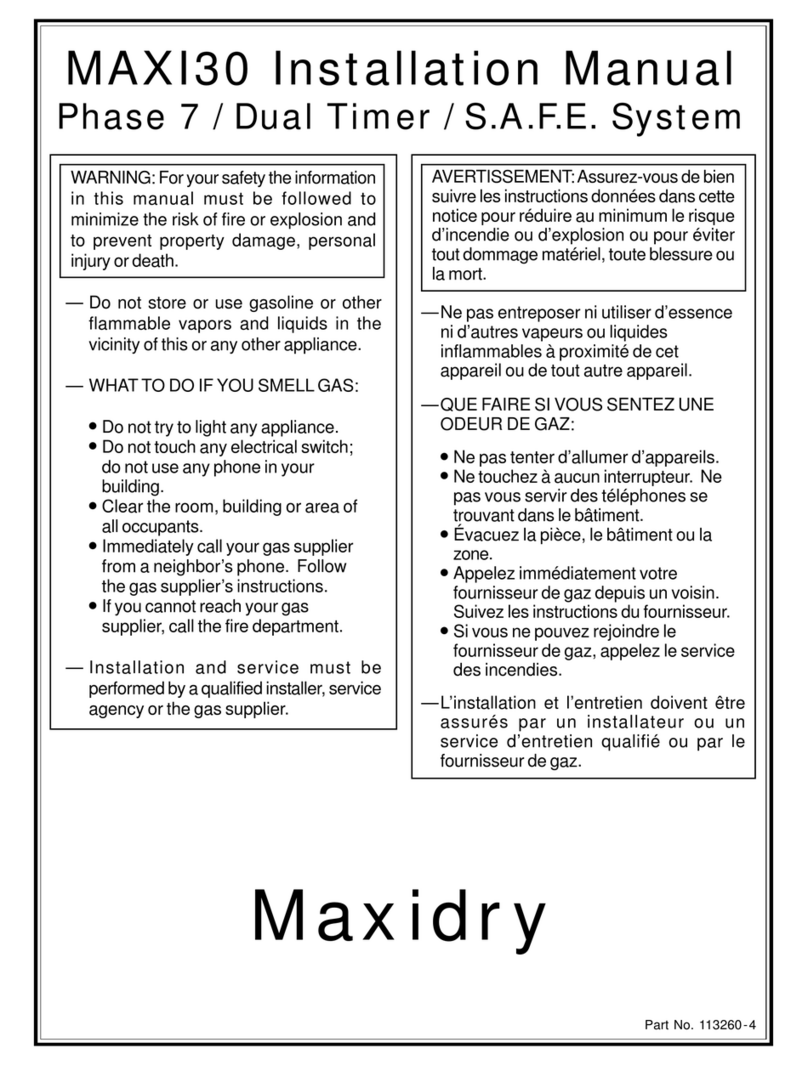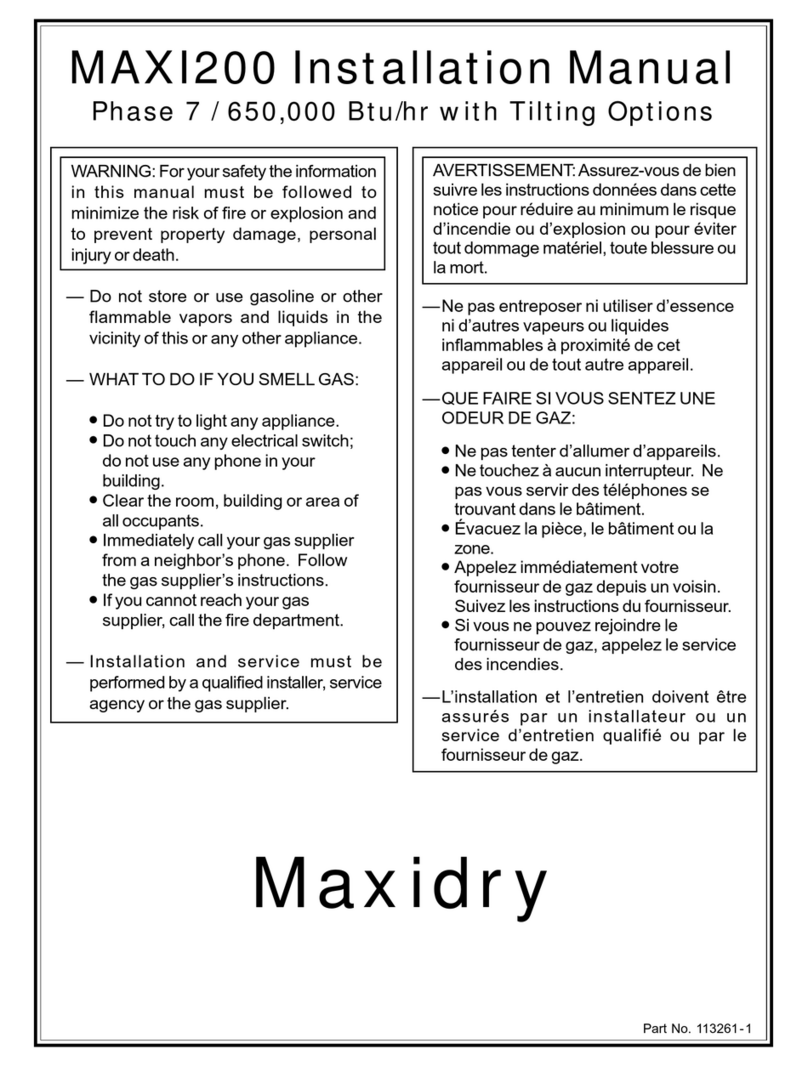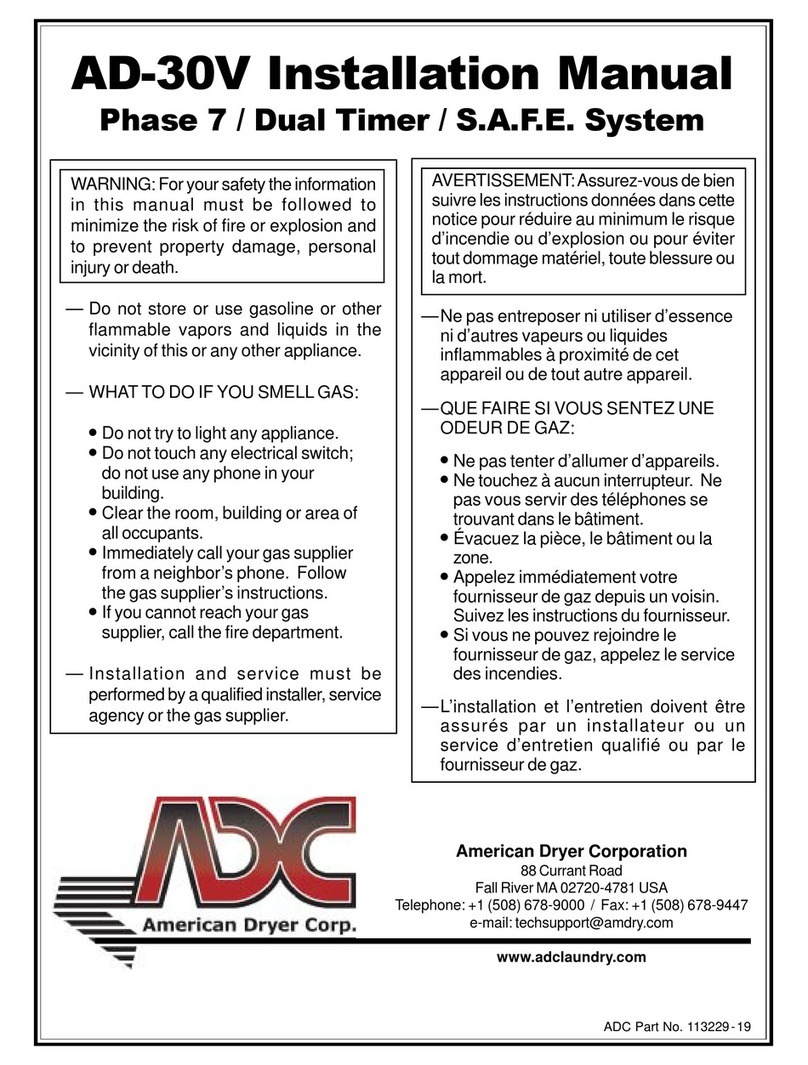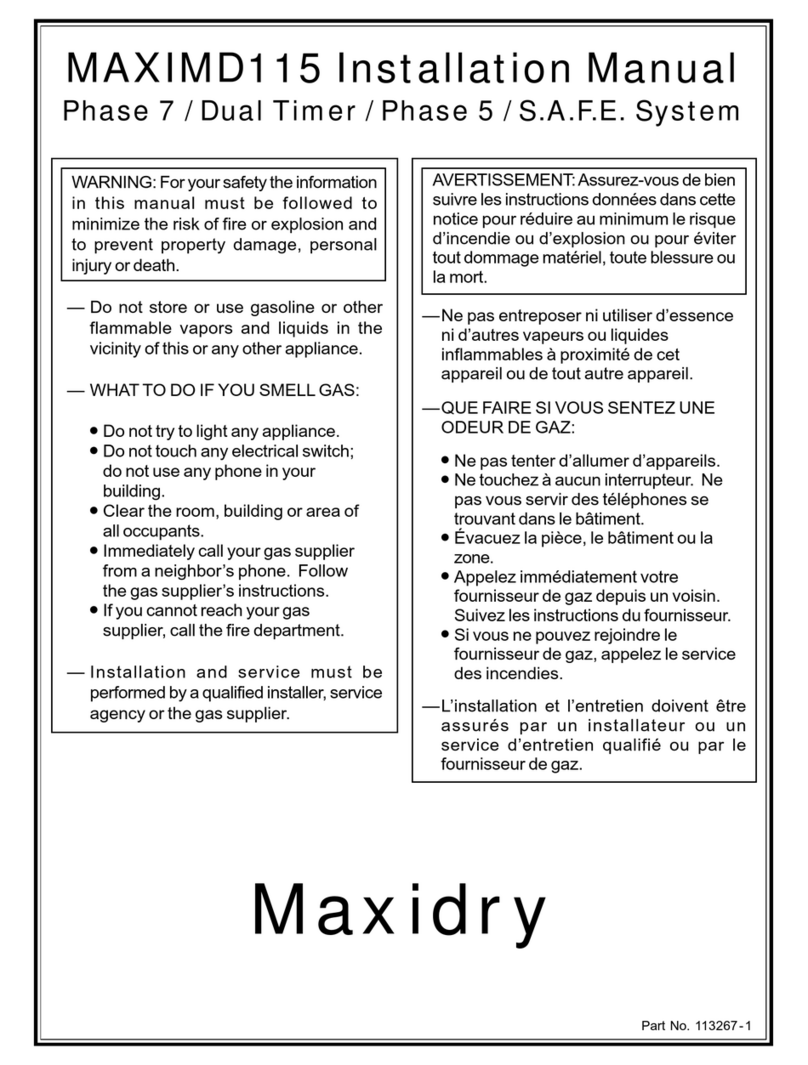
4113257-4
Dry only water washed fabrics. Do not dry articles
spotted or washed in dry cleaning solvents, a
combustible detergent, industrial chemicals, or “all
purpose” cleaner. Explosion could result.
Do not dry rags or articles coated or contaminated
with gasoline, kerosene, oil, paint, or wax. Explosion
could result.
Items that have been spotted or soaked with vegetable
or cooking oil constitute a fire hazard and should not
be placed in a tumble dryer.
Do not dry mop heads. Contamination by wax or
flammable solvents will create a fire hazard.
Do not use heat for drying articles that contain plastic,
foam, sponge rubber, or similarly textured rubber
materials. Drying in a heated tumbler may damage
plastics or rubber and may be a fire hazard.
Do not store or use gasoline or other flammable vapors and
liquids in the vicinity of this or any other appliance.
Do not spray aerosols in the vicinity of this appliance while it
is in operation.
Purchaser/user should consult the local gas supplier for
proper instructions to be followed in the event the user smells
gas. The instructions should be posted in a prominent
location.
What To Do If You Smell Gas:
• Do not try to light any appliance.
• Do not touch any electrical switch.
• Do not use any phone in your building.
• Clear the room, building, or area of all occupants.
• Immediately call your gas supplier from a neighbor’s
phone. Follow the gas supplier’s instructions.
• If you cannot reach your gas supplier, call the fire
department.
Installation and service must be performed by a qualified
installer, service agency, or gas supplier.
Dryer(s) must be exhausted to the outdoors.
Although the manufacturer produces a very versatile dryer,
there are some articles that, due to fabric composition or
cleaning method, should not be dried in it.
For your safety, the information in this manual must
be followed to minimize the risk of fire or explosion
or to prevent property damage, personal injury, or loss
of life.
The dryer must never be operated with any of the back
guards, outer tops, or service panels removed.
Personal injury or fire could result.
Failure to properly install, maintain, and/or operate
dryer according to this manual and operator’s
manuals included with dryer may result in conditions,
which can cause serious injury, death and/or property
damage.
Safety Precautions ___________________
!WARNING
The possible presence of residual quantities of aggressive
or decomposed chemicals in the load may produce damage
to the machine and harmful fumes.
A program should be established for the inspection and
cleaning of lint in the heating unit area, exhaust ductwork,
and inside the dryer. The frequency of inspection and
cleaning can best be determined from experience at each
location.
The collection of lint in the burner area and exhaust
ductwork can create a potential fire hazard.
For personal safety, the dryer must be electrically grounded
in accordance with local codes and/or the National Electrical
Code ANSI/NFPA NO. 70-LATEST EDITION, or in Canada,
the Canadian Electrical Codes Parts 1 & 2 CSA C22.1-1990
or LATEST EDITION.
NOTE: Failure to electrically ground the dryer properly will
void the warranty.
Under no circumstances should the dryer door switch, lint
drawer switch, heat safety circuits ever be disabled.
This dryer is not to be used in the presence of dry cleaning
solvents or fumes.
Remove articles from the dryer as soon as the drying cycle
has been completed.
Articles left in the dryer after the drying and cooling
cycles have been completed can create a fire hazard.
Do not operate steam dryers with more than 125 psi (8.62
bar, 862 kPa) steam pressure. Excessive steam pressure
can damage steam coil and/or harm personnel.
Replace leaking flexible hoses or other steam fixtures
immediately. Do not operate the dryer with leaking flexible
hoses. Personal injury may result.
Read and follow all caution and direction labels attached to
the dryer.
For safety, proper operation, and optimum performance, the
dryer must not be operated with a load less than sixty-six
percent, 79 lb (35.4 kg) of its rated capacity.
You must disconnect and lockout the electric supply
and the gas supply or the steam supply before any
covers or guards are removed from the machine to
allow access for cleaning, adjusting, installation, or
testing of any equipment per OSHA standards.
!WARNING
!WARNING
!WARNING
!WARNING
!WARNING
Personal injury or fire could result should the dryer
door switch, lint door/drawer, or heat safety circuit
ever be disabled.
































